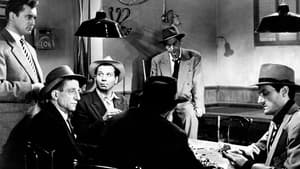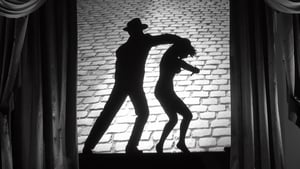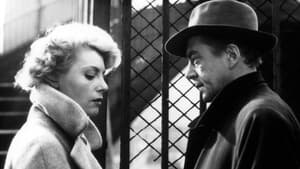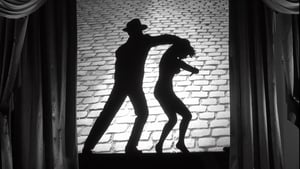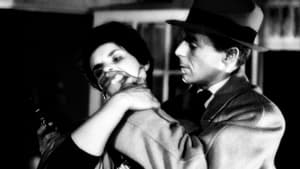Video Sources 0 Views
- Watch trailer
- Rififi 1955 Colorized

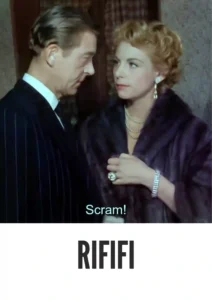
Synopsis
Table of Contents
Toggle
Dive into the gritty world of Parisian crime with Rififi, a suspenseful heist film from 1955 directed by Jules Dassin, now brilliantly colorized to immerse you in its shadowy atmosphere like never before. More than just a film noir, this is a meticulously crafted crime drama, exploring the planning and execution of a daring jewelry store robbery and its dark consequences. Perfect for fans of classic thrillers and those seeking a sophisticated, suspenseful cinematic experience, this HD download offers a fresh perspective on a groundbreaking film.
Rififi centers around Tony le Stéphanois (Jean Servais), a seasoned but aging jewel thief, fresh out of prison. Tony, along with his loyal accomplices Jo le Suédois (Carl Möhner), Mario Ferrati (Robert Hossein), and Cesar (Jules Dassin), plan an elaborate and seemingly foolproof heist on a jewelry store.
The film is renowned for its extended, almost dialogue-free sequence depicting the robbery itself, showcasing the meticulous planning and execution of the crime. However, things begin to unravel when their actions attract the attention of rival gangs and the police. Betrayal, greed, and violence soon consume the group as they struggle to hold onto their ill-gotten gains. The film’s suspenseful plot, combined with its realistic portrayal of criminal life, makes Rififi a truly unforgettable and influential piece of cinema. Rififi is a master class in suspense, exploring the dark side of human nature with unflinching realism.
The film boasts a stellar cast of international actors who perfectly embody their characters:
-
Jean Servais as Tony le Stéphanois
-
Carl Möhner as Jo le Suédois
-
Robert Hossein as Mario Ferrati
-
Jules Dassin as Cesar
Rififi transcends simple categorization, blending elements of the heist film, film noir, and crime drama to create a unique and compelling cinematic experience. Its focus on realism, moral ambiguity, and suspense sets it apart from more conventional crime films.
Released in 1955, Rififi reflects the changing landscape of post-war European cinema. The film was a co-production between France and the United States, showcasing the increasing international collaboration in filmmaking. Jules Dassin, an American director blacklisted in Hollywood during the McCarthy era, found creative freedom in France, bringing his distinctive vision to Rififi. The film’s success helped to revitalize the film noir genre and paved the way for future heist films. Its gritty realism and morally complex characters challenged the conventions of mainstream cinema, making it a landmark film in the history of crime cinema.
This colorized version of Rififi has been meticulously restored, using advanced digital techniques to enhance the visual experience while respecting the film’s original aesthetic. The colorization process involved careful analysis of the original black and white cinematography, ensuring that the colors accurately reflect the film’s mood and atmosphere. The goal was to add depth and vibrancy to the visuals, making the film more accessible to modern audiences while preserving its artistic integrity. By carefully selecting color palettes and using advanced image enhancement algorithms, this version of Rififi offers a new way to appreciate Jules Dassin’s masterpiece.
-
: Jules Dassin
-
: Jules Dassin, Auguste Le Breton (novel)
-
: Philippe Agostini
-
: Roger Dwyre
-
: Indusfilms, Pathé Consortium Cinéma
-
: Pathé Consortium Cinéma
-
: 118 minutes
-
: MP4
-
: HD (1080p)
-
: Compatible with most devices, including smartphones, tablets, computers, and smart TVs.
Rififi is widely regarded as a classic of the heist genre and a significant work in Jules Dassin’s filmography. Its influence can be seen in countless subsequent crime films. Critics have praised its realistic portrayal of criminal life, its suspenseful plot, and its innovative cinematography. The film’s extended robbery sequence is particularly celebrated for its technical brilliance and its ability to create tension without dialogue. Rififi remains a powerful and influential film, showcasing the artistry and innovation of post-war European cinema.
-
: What is Rififi about?
-
A: Rififi is about a group of thieves who plan and execute a daring jewelry store robbery, with unexpected and violent consequences.
-
-
: Why is Rififi considered a classic film?
-
A: Rififi is celebrated for its realistic portrayal of crime, its suspenseful plot, and its innovative cinematography, particularly the extended robbery sequence.
-
-
: Is this version of Rififi colorized?
-
A: Yes, this version has been professionally colorized to enhance the viewing experience for modern audiences.
-
-
: Who directed Rififi?
-
A: Rififi was directed by Jules Dassin, an American director who found success in France after being blacklisted in Hollywood.
-
-
: What is the download format?
-
A: The download format is MP4, which is compatible with most devices.
-
-
: What resolution is the download?
-
A: The resolution is HD (1080p), providing a high-quality viewing experience.
-
Experience the thrill of Rififi today!
